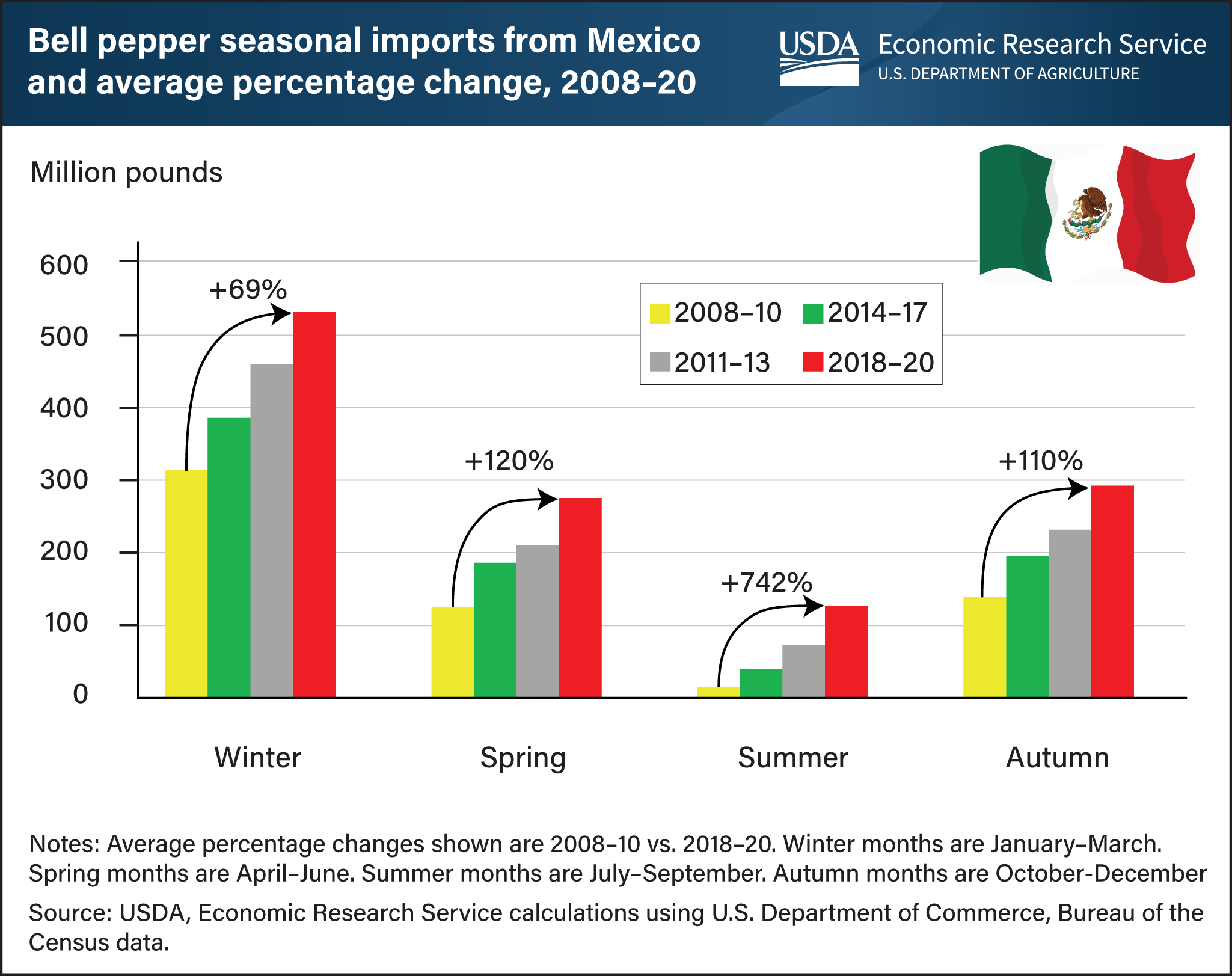Imports of bell peppers from Mexico grow as marketing window for U.S.-grown produce shrinks
- by Wilma V. Davis and Gary Lucier
- 12/6/2021

U.S. fresh vegetable imports are higher than ever and help satisfy rising consumer demand for year-round produce, according to reports from USDA’s Economic Research Service. Imports rise during the winter months (January to March) when U.S. production reaches a seasonal lull, but shipments now increasingly overlap with traditional U.S. production seasons. Extension of imports into domestic production seasons, called “market creep,” affects the entire U.S. produce industry, supporting increased shipments from Mexico, Canada, and Central America. For example, winter imports of bell peppers from Mexico increased by 69 percent between the 2008–10 and 2018–20 time periods. Summer (July-September) is historically a prime marketing window for U.S.-grown bell peppers, yet U.S. imports of bell peppers from Mexico increased by 742 percent between the summers of 2008–10 and 2018–20. Liberalized trade agreements, comparatively lower foreign exchange rates, increased per capita consumption, and demand for wider variety of offerings have contributed to the rise in imports. This chart first appeared in the USDA, Economic Research Service Amber Waves feature, U.S. Fresh Vegetable Imports From Mexico and Canada Continue To Surge.


